Here we present some of our research works in more detail.
Back to Research Page

| Analysis of high-speed imaging data to study a cluster of cavities resulting after a bubble breakup is extremely challenging. It requires monitoring many cavity voids, which expand, split, collapse, and give rise to new cavities in the complex motion of the cavity cloud.
We utilized and developed computer vision (CV) tools to study bubble breakup dynamics. The CV “blob” (a term commonly used in image processing applications to describe a region of pixels with some common properties) statistics provided unprecedented quantitative data from non-intrusive imaging techniques, revealing valuable new insights into the physics of bubble breakup, non-spherical cavities spatio-temporal evolution, and cavitation inception mechanisms. The GIF animations below show the application of our CV code for the characterization of breakup kinematics of different bubble sizes in the CD nozzle. For more details, see our paper:
|
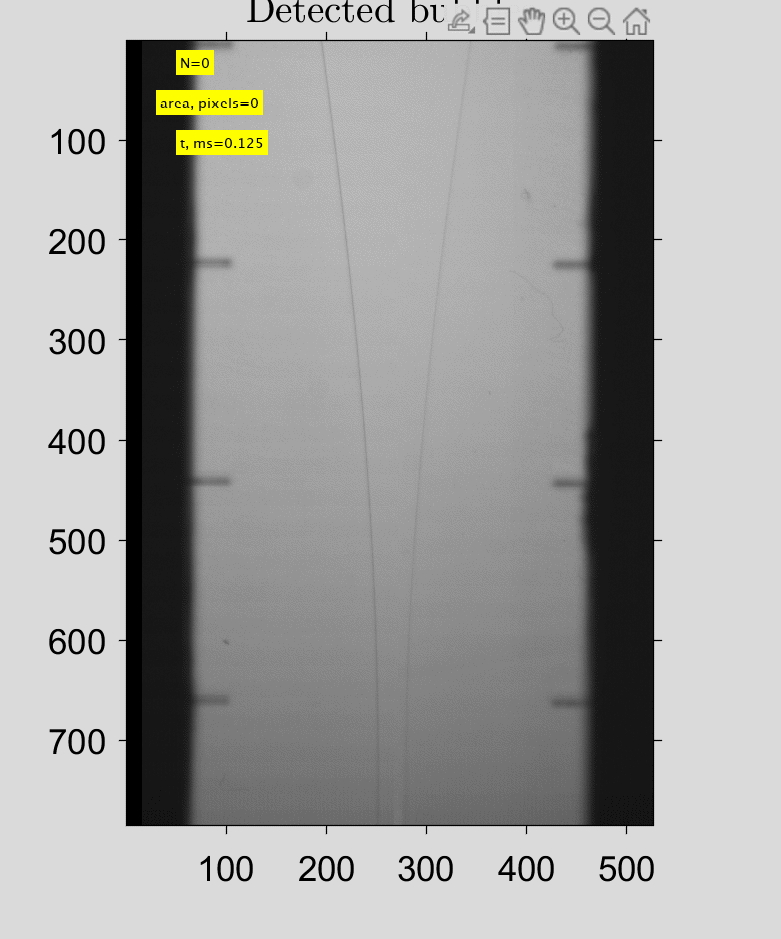 |
We developed a new unsteady bubbly shock wave imaging technique, termed enhanced gradient shadowgraphy, which allowed us to study bubbly shock wave development as well as its subsequent spatio-temporal evolution coupled with cavity cloud dynamics, and extract quantitative data from this imaging. Two independent sustained mechanisms responsible for bubbly shock wave generation in the diverging section of the nozzle have been observed in the choked flow regime. A detailed systematic quantitative data is obtained to characterize shock wave intensity and velocity in aerated flow regimes of two jet fuels (JP5 and JP8) under different bubble injection rates, nozzle back pressures, and void fractions.Observed shock waves in cavitating aviation fuel JP-5 using our enhanced gradient shadowgraphy technique. The shock waves highlighted in hot color in cavitating aerated CD-=nozzle. For more details see:
|
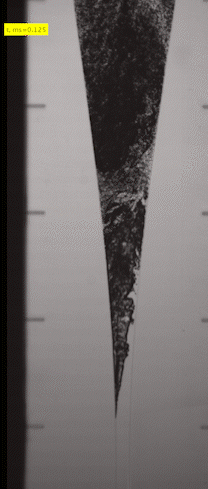 |
| We study the radial flow of aviation fuel JP-5 and distilled water between two parallel disks with a thin gap, which is a highly relevant geometry to aviation fuel pumps. High-speed imaging and pressure measurements were used to quantify the cavitation behavior and capture the radial collapse location of cavitation voids for different flow regimes to validate our model. The model predictions of the radial location of bubble collapse and the radial pressure profiles were shown to be in excellent agreement with the experiments. Our modeling approach can be utilized for predicting aviation fuel cavitation erosion damage without the expense of time-costly high-fidelity simulations. For more details see
Gluzman, I. Anthony Pelster∗, Michael Waldrop∗, & Thomas, F. O., On cavitation in the radial flow of a thin lubricating film between two overlying disks, Phys. Fluids, 35, 023302 (2023). (Link)
|

|
Reduced order modeling of actuated flow fields
| The input-output approach is expanded to investigate actuated wall-bounded shear flows whose geometries and input signals span a range of pulse-width modulated signals common in experimental flow control studies. The model is validated through comparisons to experiments and simulations of three different plasma actuator geometries. An important benefit of this analytical method is the low computational cost associated with its use, enabling efficient parametric studies.
In addition, we derived input-output model for analyzing the flow response to external periodic perturbation in turbulent boundary layers for studying the dynamics of large-scale structures. For more details see:
|
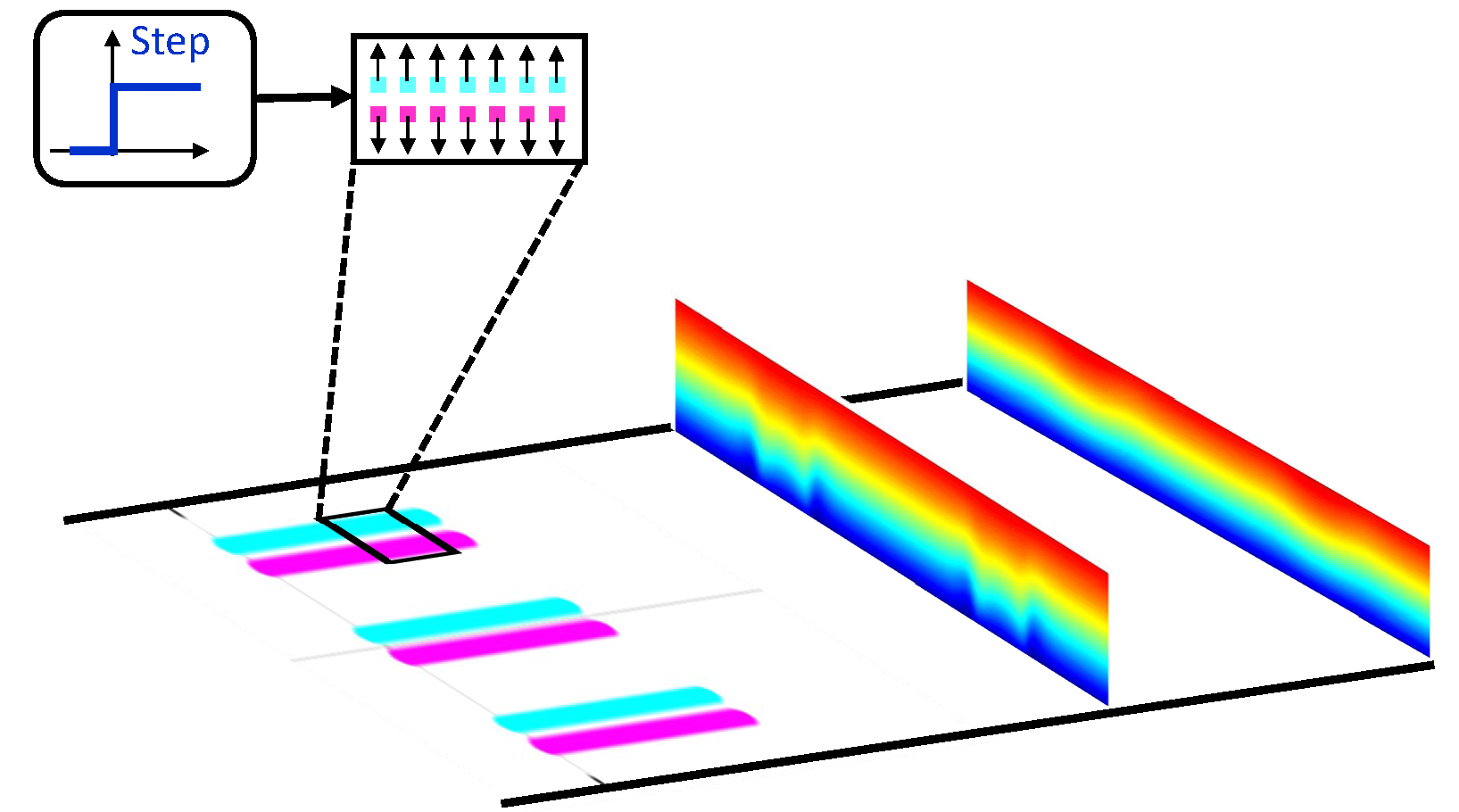 |
Flow field estimation from minimal sensing (Utilization of Blind Source Separation (BSS) methods and estimation theory):
We proposed a novel paradigm that regards a wall-bounded shear flow at a certain point as a mixture of sources that provides a decomposition of the flow into a set of signals with a clear and meaningful physical interpretation. A source is defined as the signal recorded by a sensor located at that point, which results from the sole action of a particular physical disturbance generator. The Degenerate Unmixing Estimation Technique (DUET) is adopted as a blind source separation (BSS) technique to recover the separate sources and their unknown mixing process. The major benefit of this approach is that it permits monitoring the flow physics with minimal sensing (2 or 3 sensors only), which renders our method implementable in real life. Therefore, our approach can be integrated in linear flow control strategies that aim at preventing/delaying transition, consequently yielding drag reduction. In addition, it can provide useful and important information on the flow behavior (at the sensor site) for data assimilation techniques in fluids. Still, the full potential of our paradigm and employing BSS techniques on flow measurements and their utilization in controlling and analyzing shear flows have been scarcely studied.
For more details see:
|
 |
We also focus our effort on actuator development and testing(plasma actuators, shape morphing actuators with ferrofluids).
Below is shown our study on plasma actuators where we track the stages of the temporal and spatial evolution of a localized 2D disturbance within a boundary layer over a flat
plate. The disturbance is generated via a Single Dielectric Barrier Discharge (SDBD) plasma actuator. 3D visualizations of the spatial structure of the disturbed flow field are obtained by hot-wire measurements that include the streamwise velocity component. We track the advanced stages of disturbance transition in which a single 2D wave breaks down to
3D coherent structures. For more details see our poster:
The Evolution of a 2D Plasma Generated Disturbance Along a Flat Plate
|
| The particle image velocimetry (PIV) technique coupled with spatial distribution measurement of temperature fluctuations in studying forced stably stratified turbulence in the air \citep{EEGKR13}. With the obtained experimental data, I validated the energy-flux-budget (EFB) turbulence closure model predictions and determined the empirical constants in the model for the stably stratified turbulence case.
For more details see:
|
  |
| Turbulence transport models rely heavily on the identification and characterization of coherent structures, which can be loosely defined as persist in time organized patterns and regions of the flow field in which flow variables exhibit significant correlations with themselves or other variables over space and time intervals. Helicity (defined as the inner product of the velocity and the vorticity vector) in turbulent and transitional flows with three-dimensional coherent structures is particularly important. The study of helicity could reveal flow structures that contribute more than others to scalar transport, as scalar transport in turbulence is enhanced by three-dimensional coherent motions. Nevertheless, the role of helicity in turbulent flows is still a subject of vigorous discussion, and there is a lack of experimental studies on the topic as helicity is elusive and difficult to measure.
We analyzed PIV measurements to determine the properties of helical turbulence in Rayleigh-B\'{e}nard convective cell (resulting due to unstable stratification) For more details see:
|
 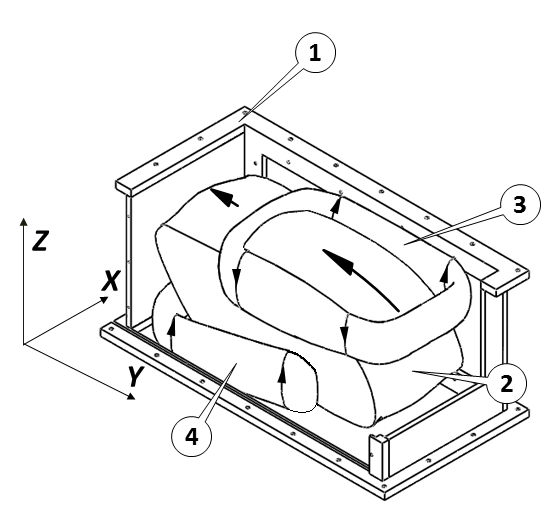 |
It is well known that current computational fluid dynamics (CFD) methods have significant difficulty in accurately predicting turbulent separated flows that are often encountered in off-design aerodynamic conditions. Thus, high-quality, detailed benchmark experimental data sets for improved model development and validation are needed. A series of archival benchmark validation experiments on turbulent boundary layer flow over the Boeing three-dimensional tapered bump are conducted at Notre Dame University, where we employed diagnostics and measurement techniques that include: surface flow visualization measurements, where a multi-color fluorescent oil film imaging technique is utilized to characterize the surface flow topology upstream, on, and downstream of the model geometry; hot-wire anemometry and surface pressure measurements via an array of multiple static pressure taps and dynamic pressure sensors, oil film interferometry (OFI), laser Doppler velocimetry (LDV), and particle image velocimetry (PIV).
| NASA webpage
|
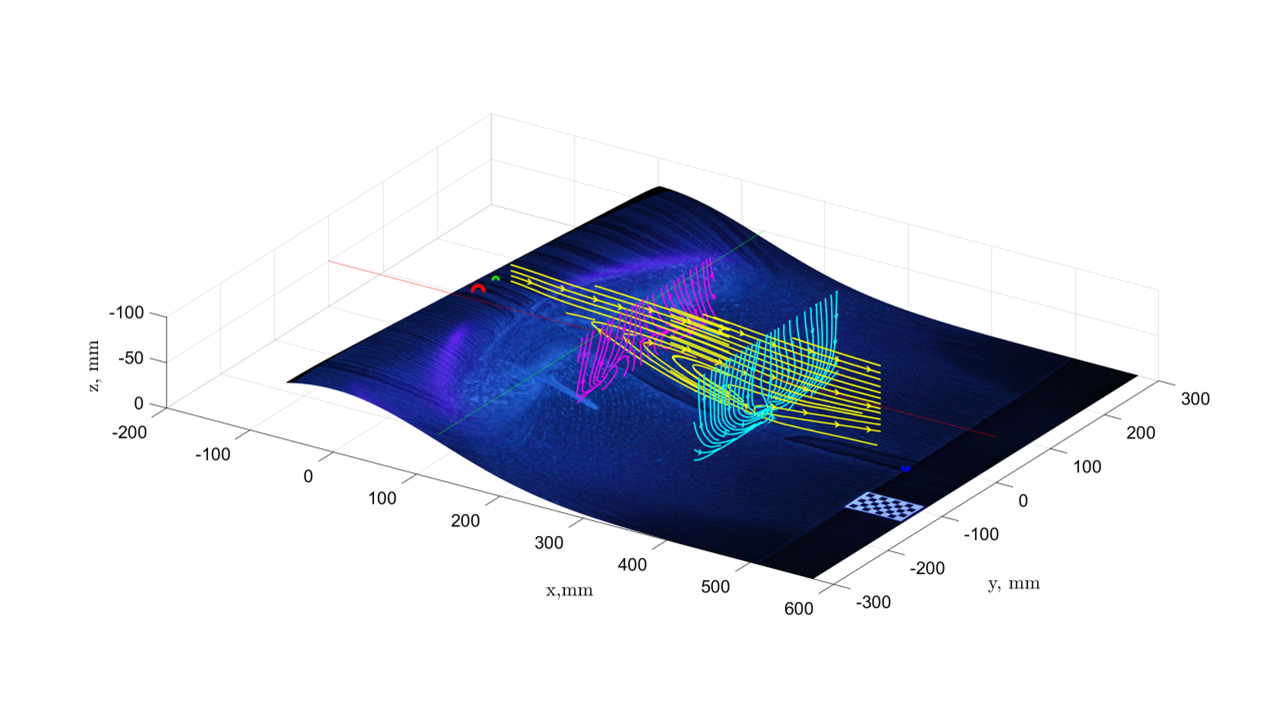
Surface flow visualizations have been integrated into a wide variety of test and simulation systems due to their powerful means for analyzing, gaining insights, and communicating simulation and experimental results. We employed photogrammetry to project 3D oil flow visualizations from 2D images over the CAD model of the bump surface, allowing a 3D view of the oil flow pattern on the model from different view angles, which provided important insights on the topology of the flow separation. |
| We developed a simplified Oil Film Interferometry (OFI) procedure to obtain very accurate skin friction measurements in turbulent separated flow over tapped bump geometry by adapting recent advances in photogrammetry.
Read more:
|
 |
A novel fast statistical calibration method that requires only two calibration data points. Being fast and relatively undemanding, the method provides a complete calibration of the hot-wire sensor without relying on prior calibration. Therefore, it can be repeated, in situ, as often as required, e.g., in cases where multiple calibrations should be performed due to varying conditions and long durations.For more details, see:
|
 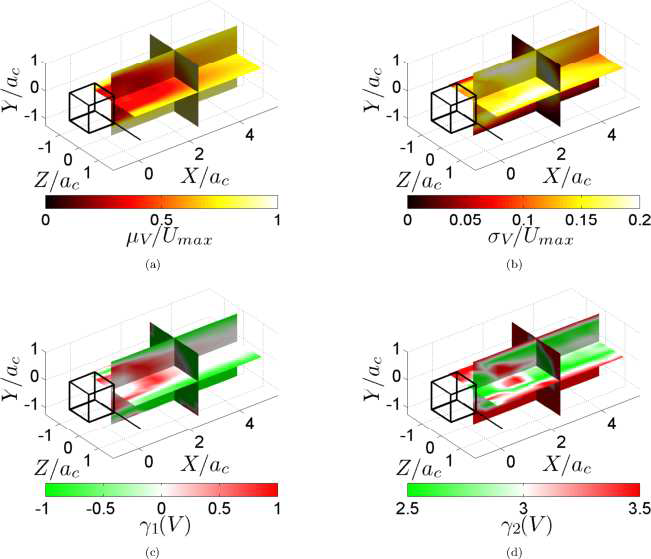 |